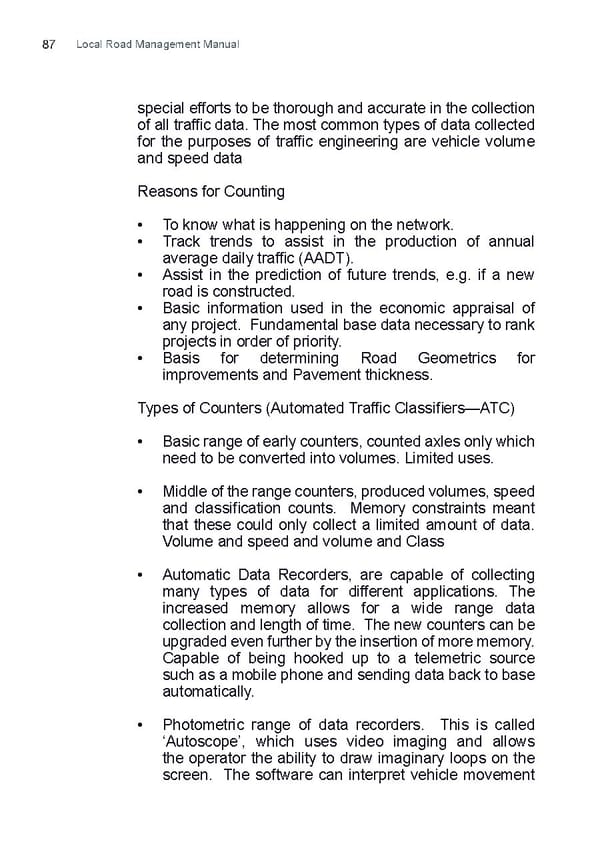Local Road Management Manual 87 special efforts to be thorough and accurate in the collection of all traiffc data. The most common types of data collected for the purposes of traiffc engineering are vehicle volume and speed data Reasons for Counting • To know what is happening on the network. • Track trends to assist in the production of annual average daily traiffc (AADT). • Assist in the prediction of future trends, e.g. if a new road is constructed. • Basic information used in the economic appraisal of any project. Fundamental base data necessary to rank projects in order of priority. • Basis for determining Road Geometrics for improvements and Pavement thickness. Types of Counters (Automated Traiffc Classiifers—ATC) • Basic range of early counters, counted axles only which need to be converted into volumes. Limited uses. • Middle of the range counters, produced volumes, speed and classiifcation counts. Memory constraints meant that these could only collect a limited amount of data. Volume and speed and volume and Class • Automatic Data Recorders, are capable of collecting many types of data for different applications. The increased memory allows for a wide range data collection and length of time. The new counters can be upgraded even further by the insertion of more memory. Capable of being hooked up to a telemetric source such as a mobile phone and sending data back to base automatically. • Photometric range of data recorders. This is called ‘Autoscope’, which uses video imaging and allows the operator the ability to draw imaginary loops on the screen. The software can interpret vehicle movement
 LRM Manual CMGP Page 86 Page 88
LRM Manual CMGP Page 86 Page 88